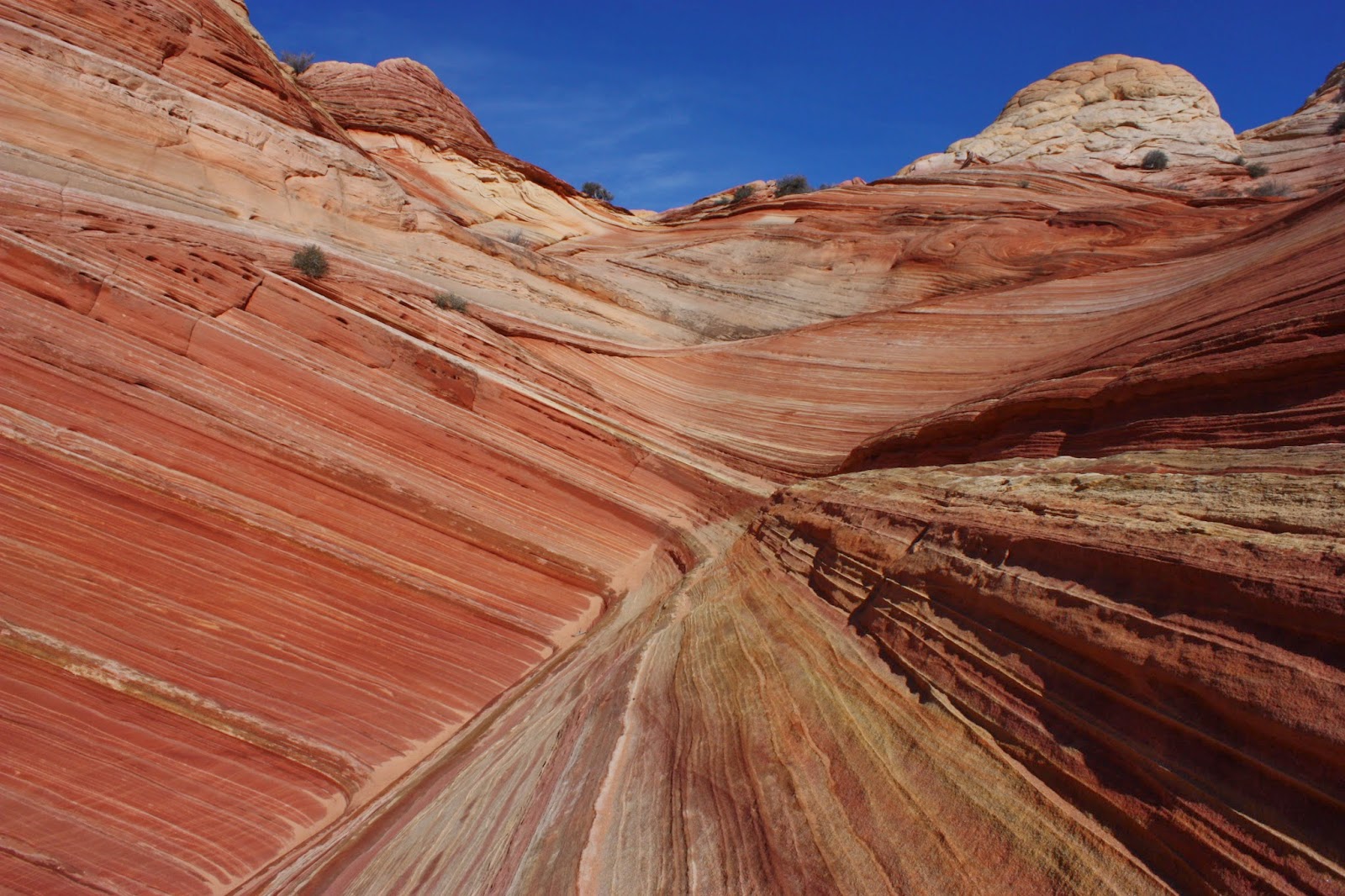(The red highlights the route of Water Canyon towards Canaan Mountain starting from the parking lot.)
The trail is very popular and well developed in the lower sections, but becomes increasingly steep and unmaintained as you approach the Canaan Mountain Plateau. Certain areas require scrambling with some exposure. These areas shouldn't be overly concerning for advanced hikers, but could be problematic for some.
This is one of those hikes where you can go as far as you want before turning around, but reaching the top of the plateau offers incredible views and opportunities for further exploration. However, keep in mind that once you reach the top of Water Canyon, there are no maintained trails and good navigation skills are required.
This is a hike that can be attempted year-round, but winter could present icy conditions. My hike was done in October of 2012, and I highly recommend this canyon in the fall. Later, you'll see why.
As I started the hike, I took note of the Water Canyon Arch, high in the cliffs above me and to the right.
A closer look:
A glance up-canyon:
Soon, I was in the heart of the canyon, and the evidence of nature's sculpting forces could be seen all around.
Few places offer such easily accessible beauty!
Soon, the trail starts to ascend out of the canyon bottom, and is not as well-maintained.
Perhaps my favorite part of the hike came next. If you recall, I said that I highly recommend this canyon in October.
Well, here's why:
I continued up the trail and scrambled over some steeper terrain before finally arriving at the top of the Canyon, and onto the Canaan Mountain Plateau, which opened up a vast world of incredible beauty.
Looking across the mountain, this swirling slickrock looked enticing for further exploration:
A closer look:
It was tempting to further explore this area, but an approaching thunderstorm made me decide to err on the side of caution and start heading back down the canyon.
I retraced my steps and avoided any danger, enjoying the canopy of red foliage again on my way down. I remember thinking that I need to make it back to Canaan Mountain very soon, and further explore that amazing slickrock. Unfortunately, as I write this, I still haven't!However, I still hope to make it back to that area. There is an advanced overnight route that is on my "to do" list that goes from Water Canyon to Eagle Crags, near Rockville, UT. This is one that would involve some serious logistical planning, including dealing with a lack of water sources, and difficult route finding. Again, not recommended unless you know what you're getting yourself into! However, I hear the scenery in the seldom-visited Canaan Mountain Wilderness is unsurpassed in terms of beauty. I definitely got a glimpse of that during my very brief visit.
Water Canyon and Canaan Mountain are very special places, and I would highly recommend exploring these areas to anyone who is looking for an adventure. If all goes as planned, I'll be back there myself very soon.


































































